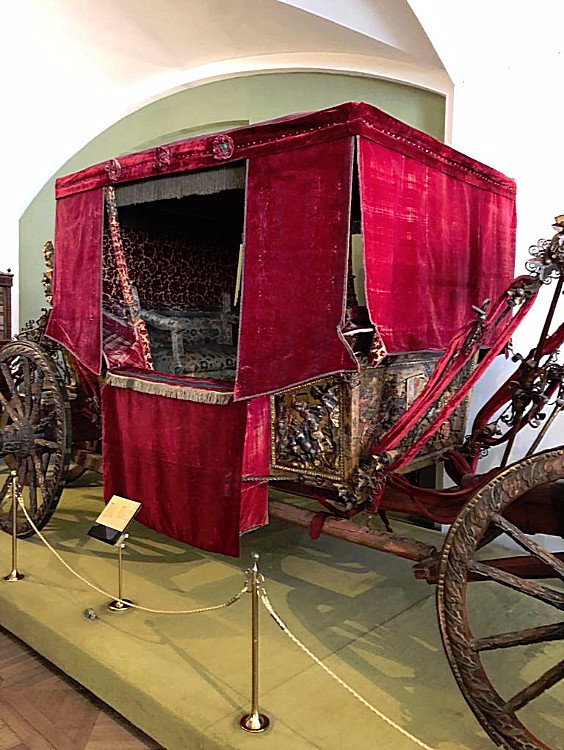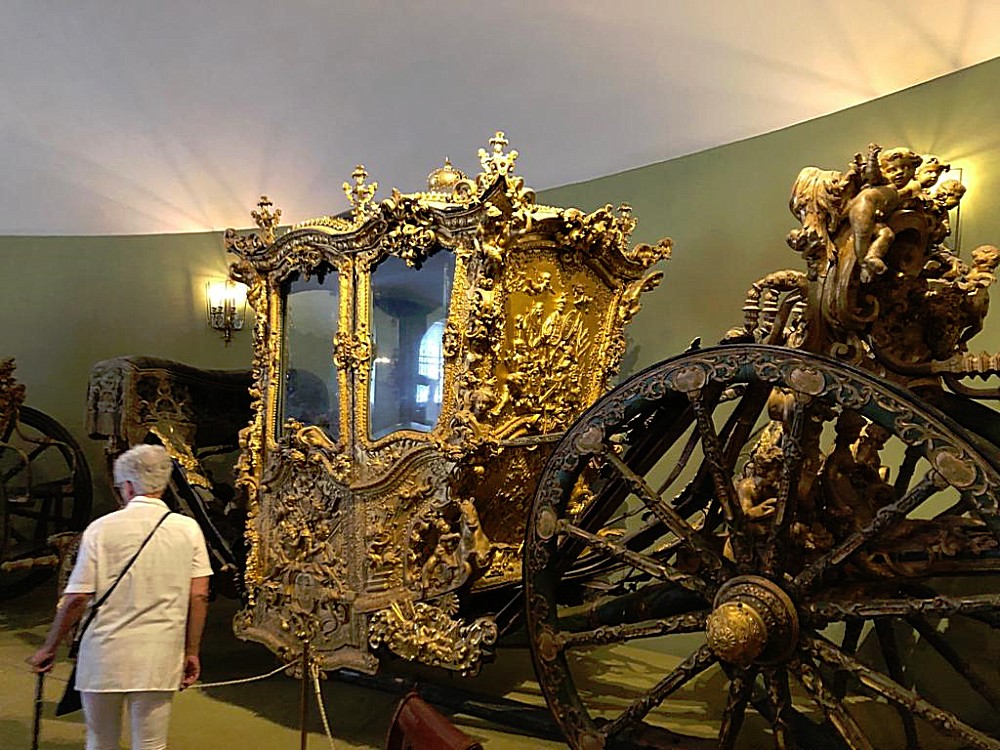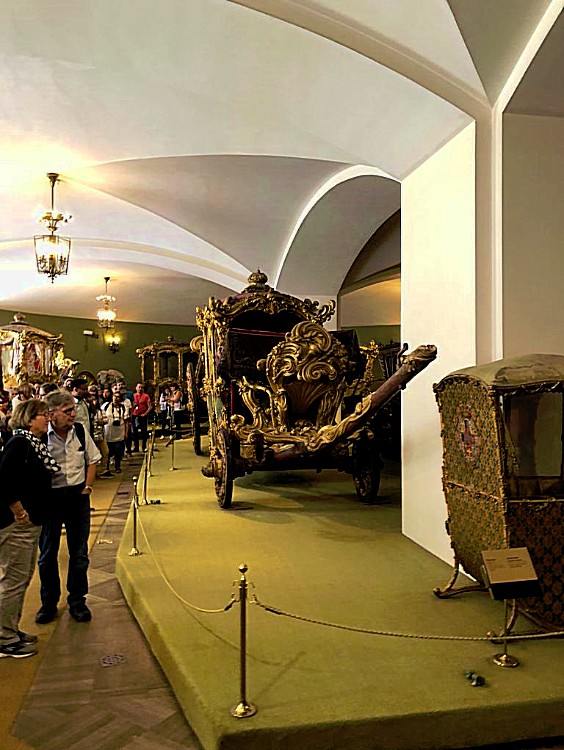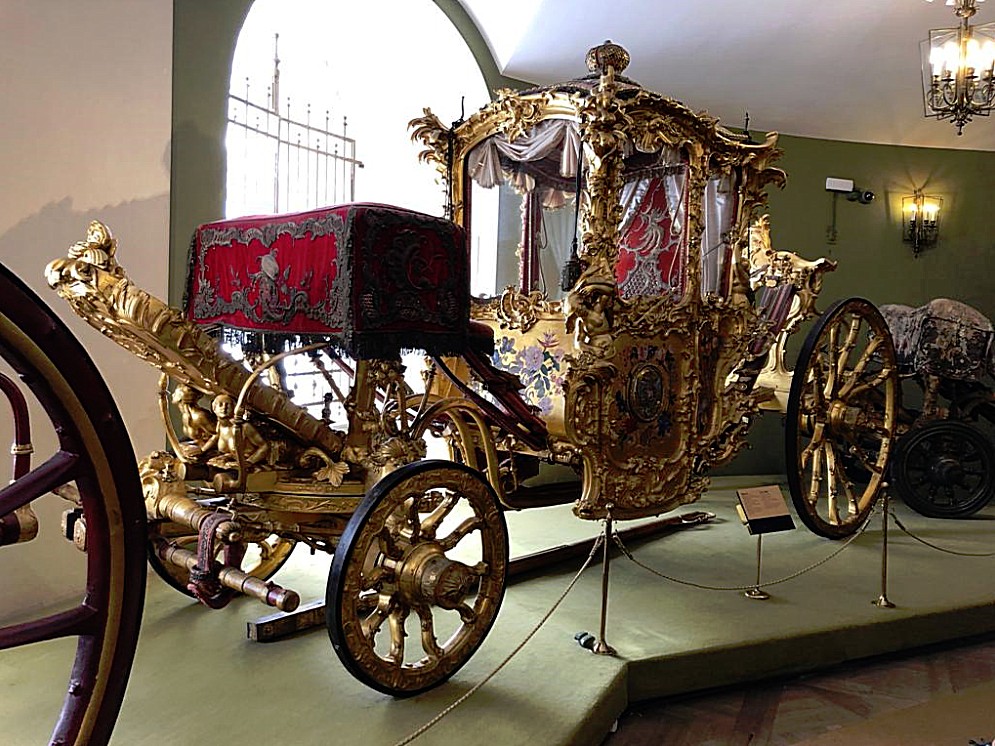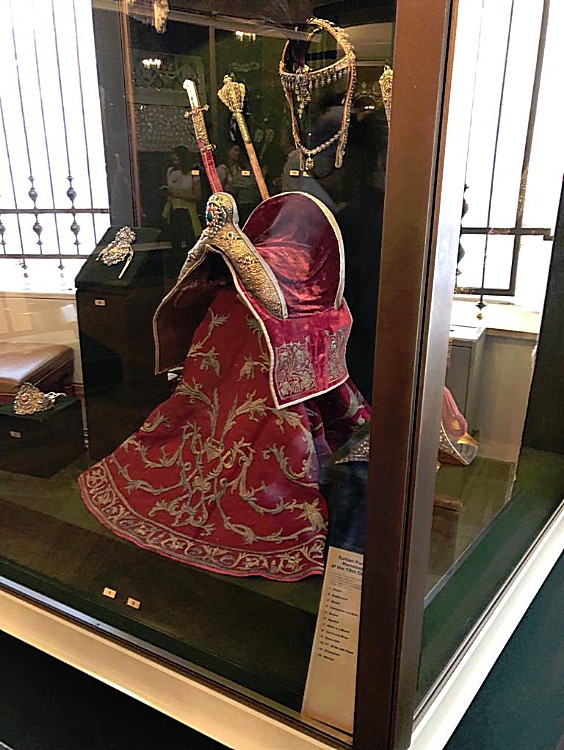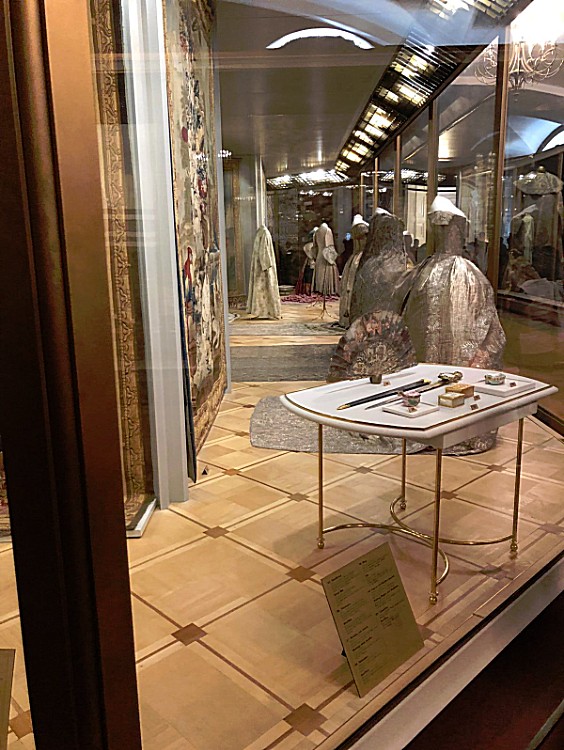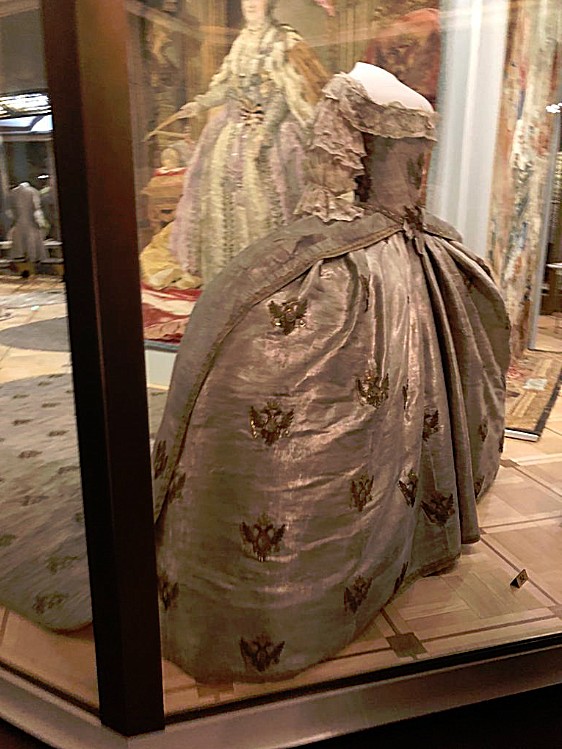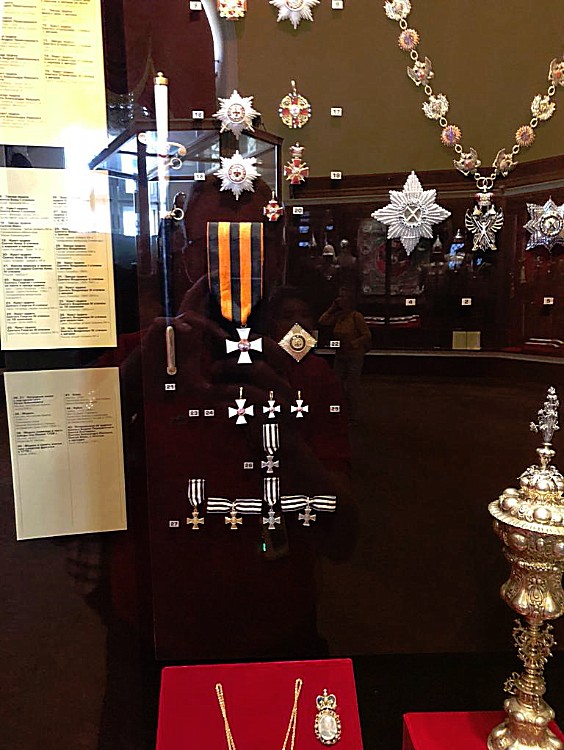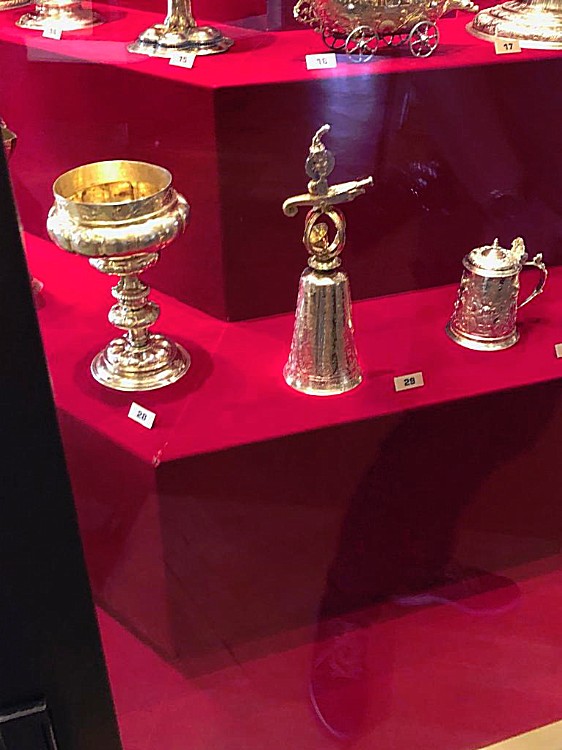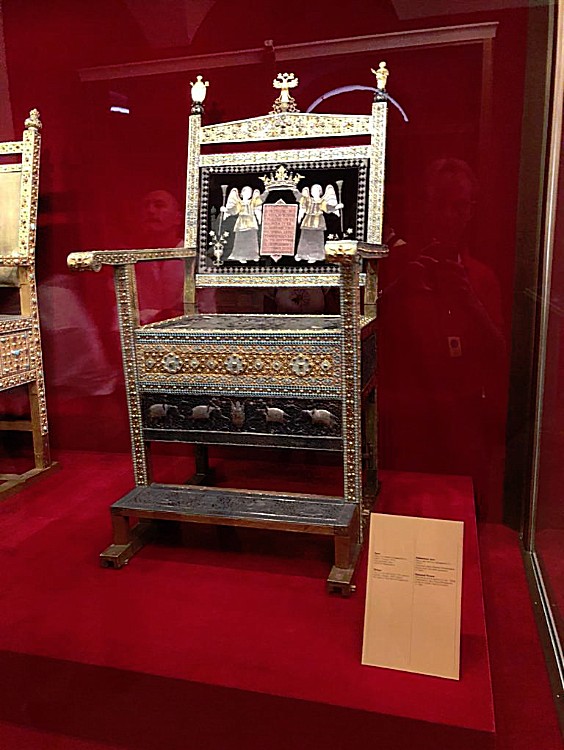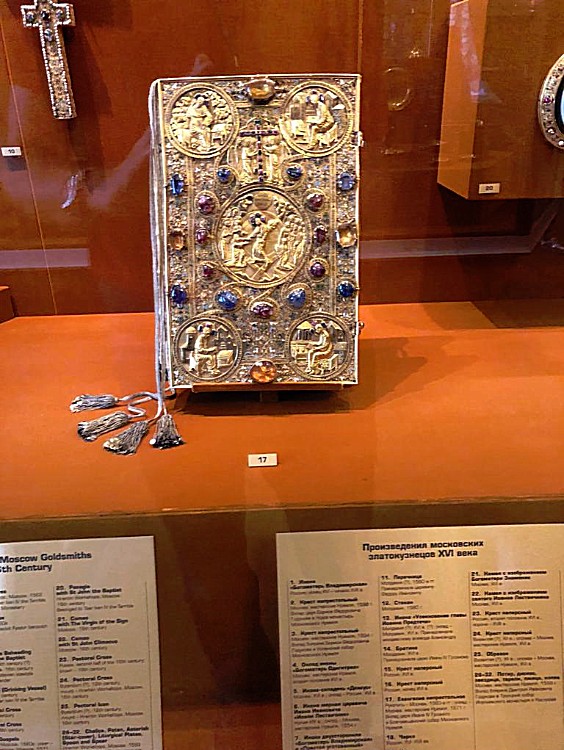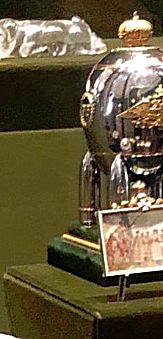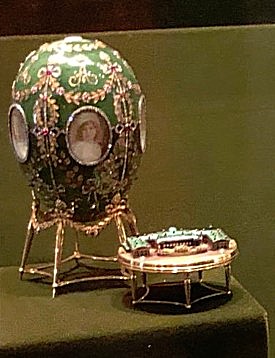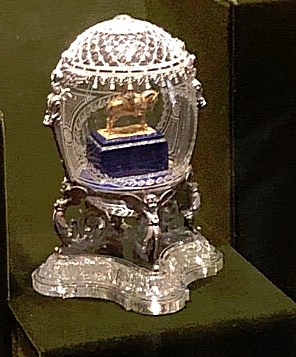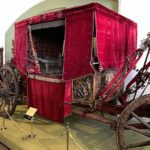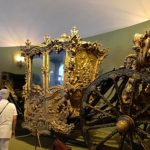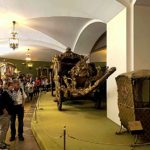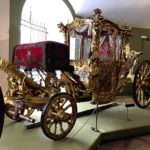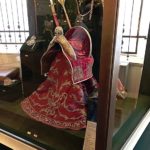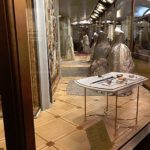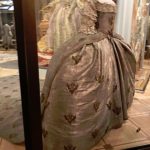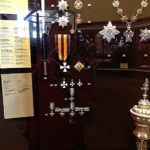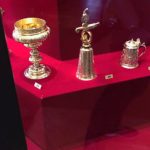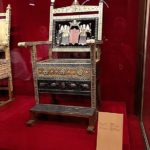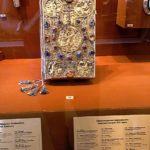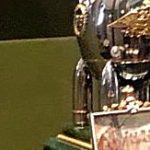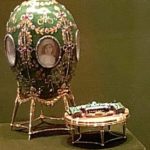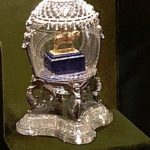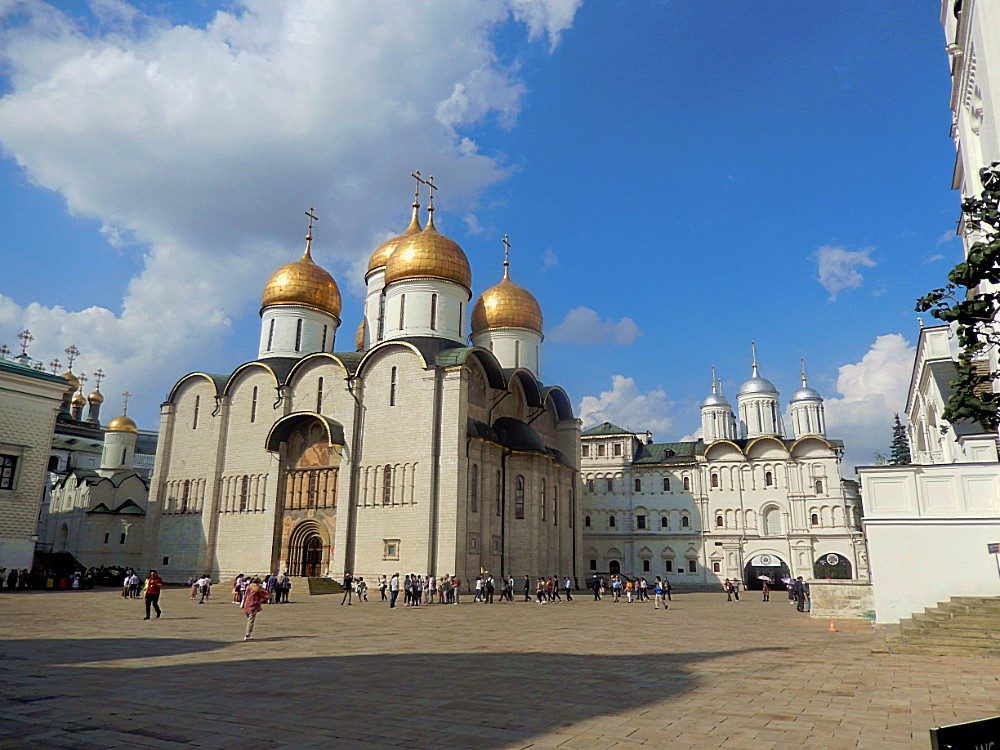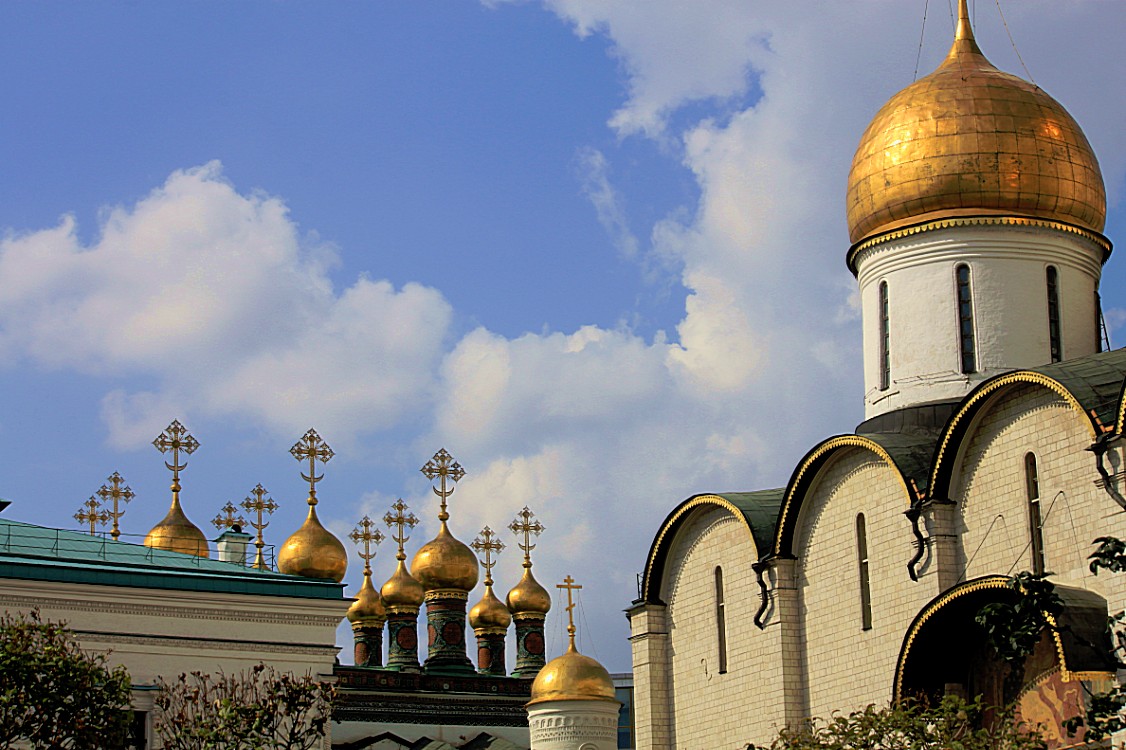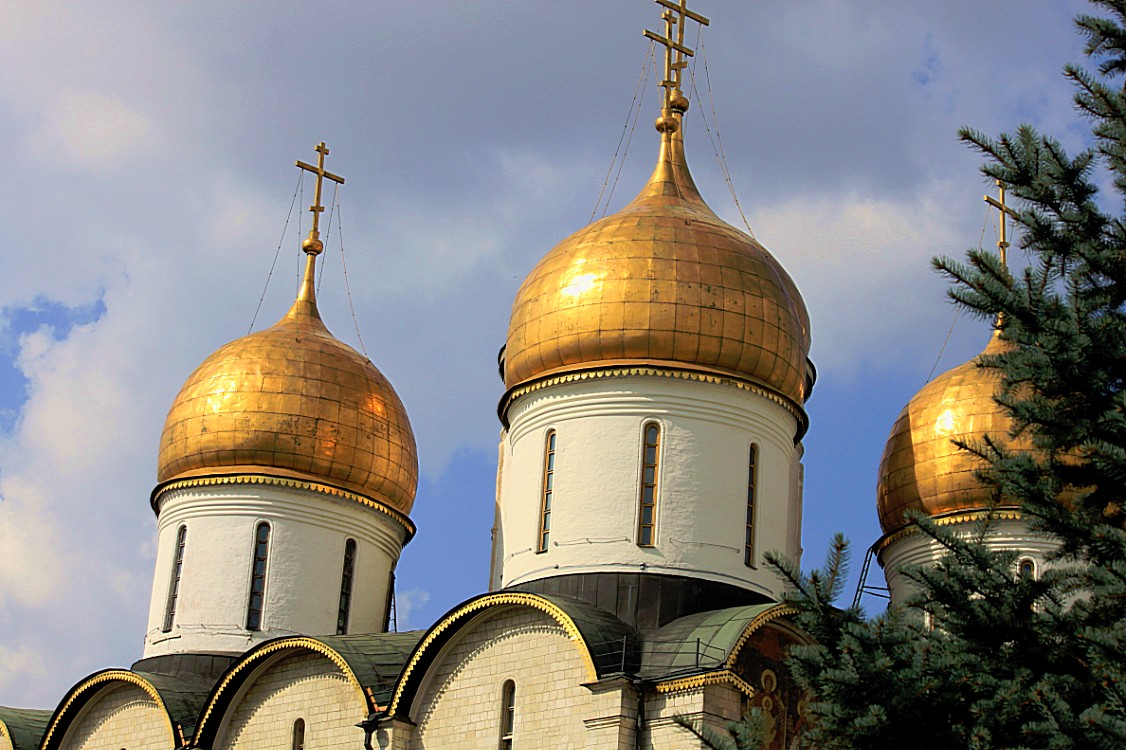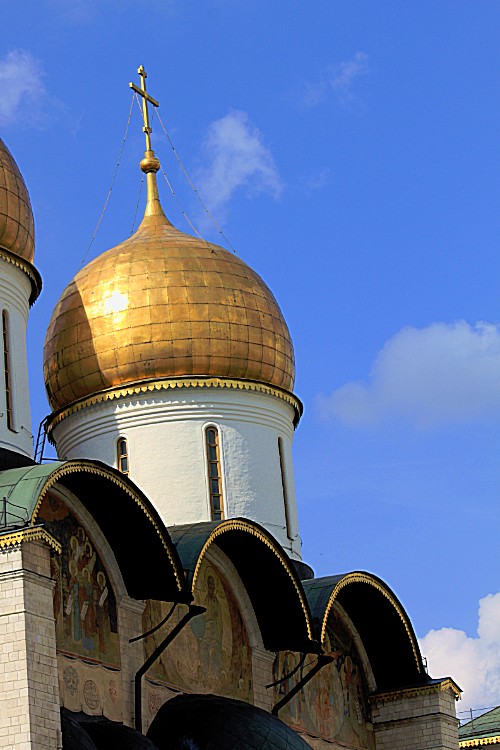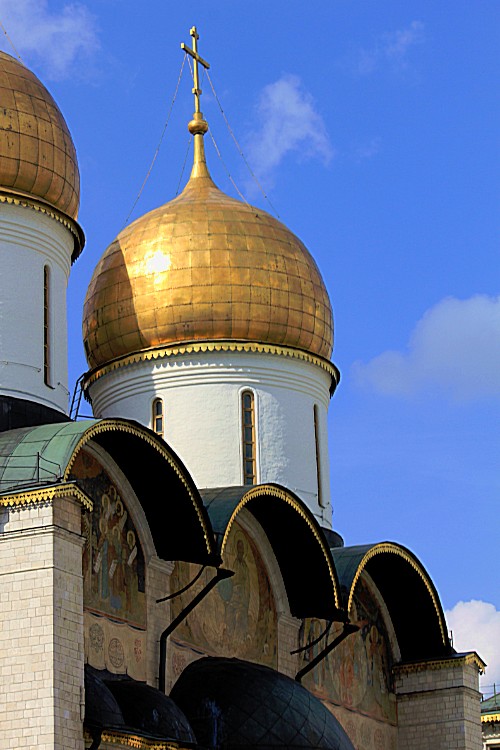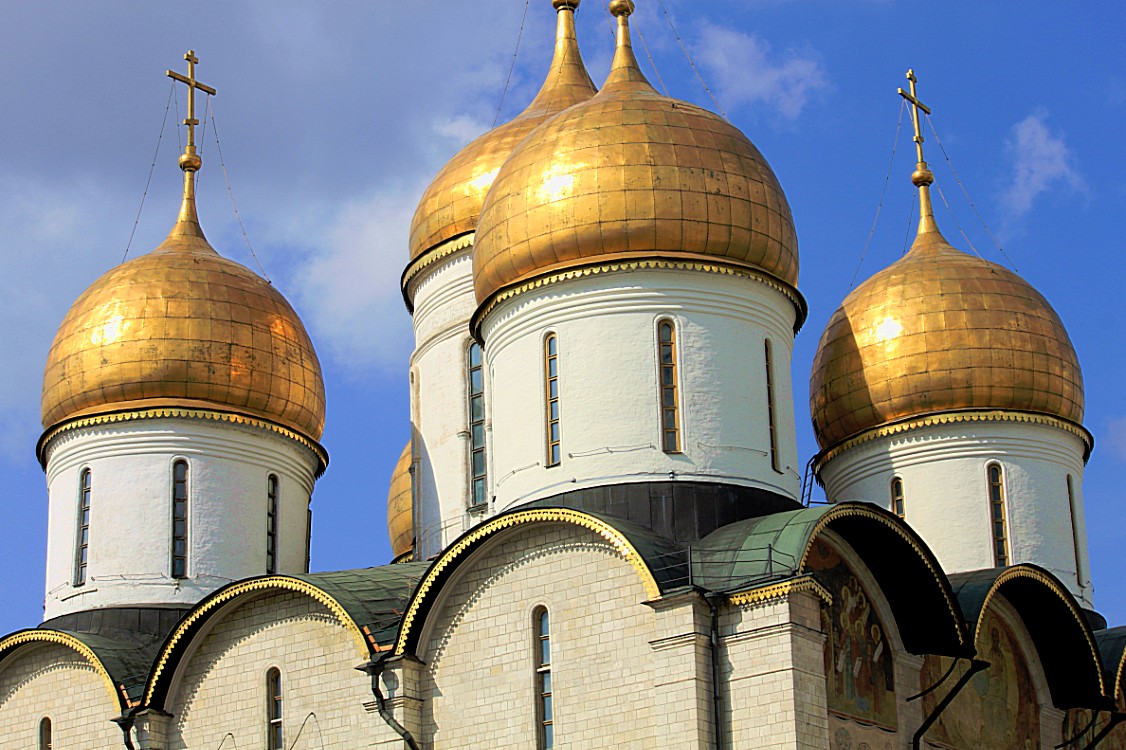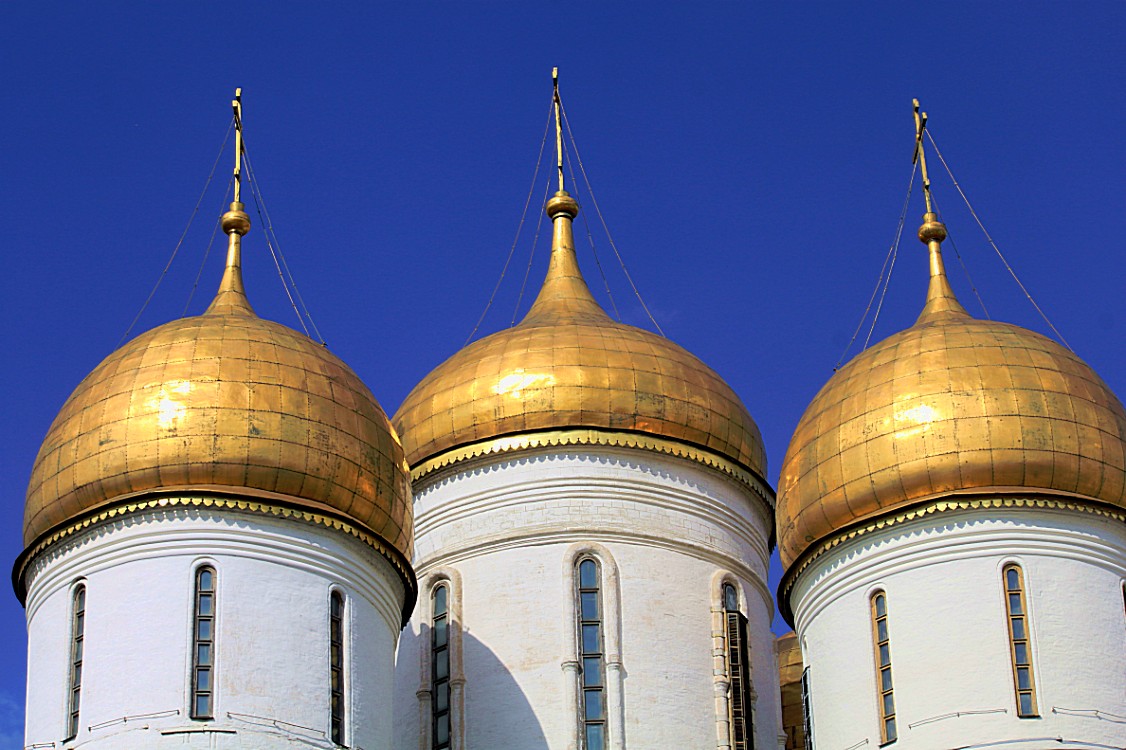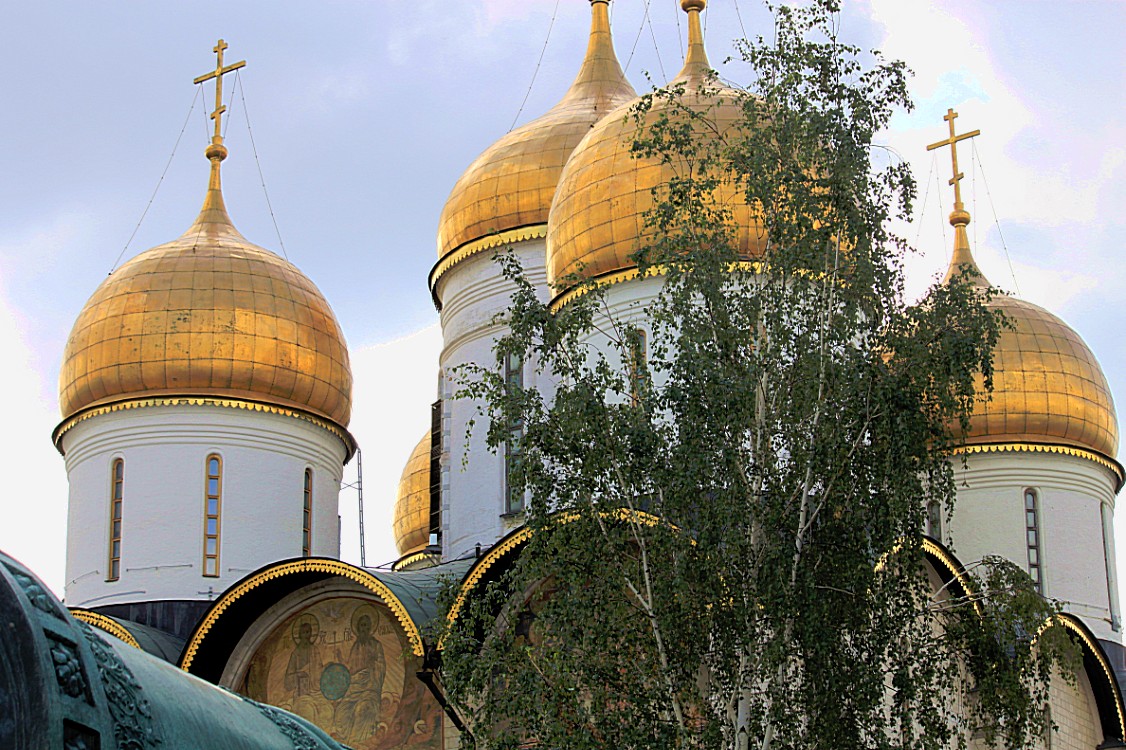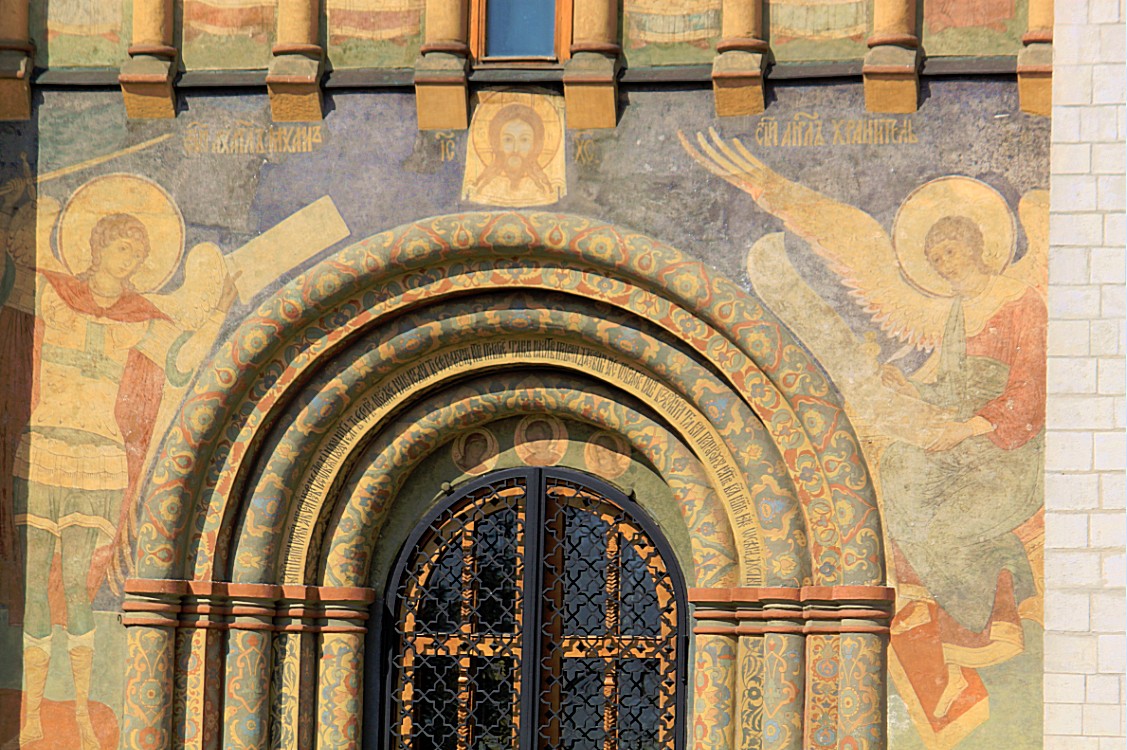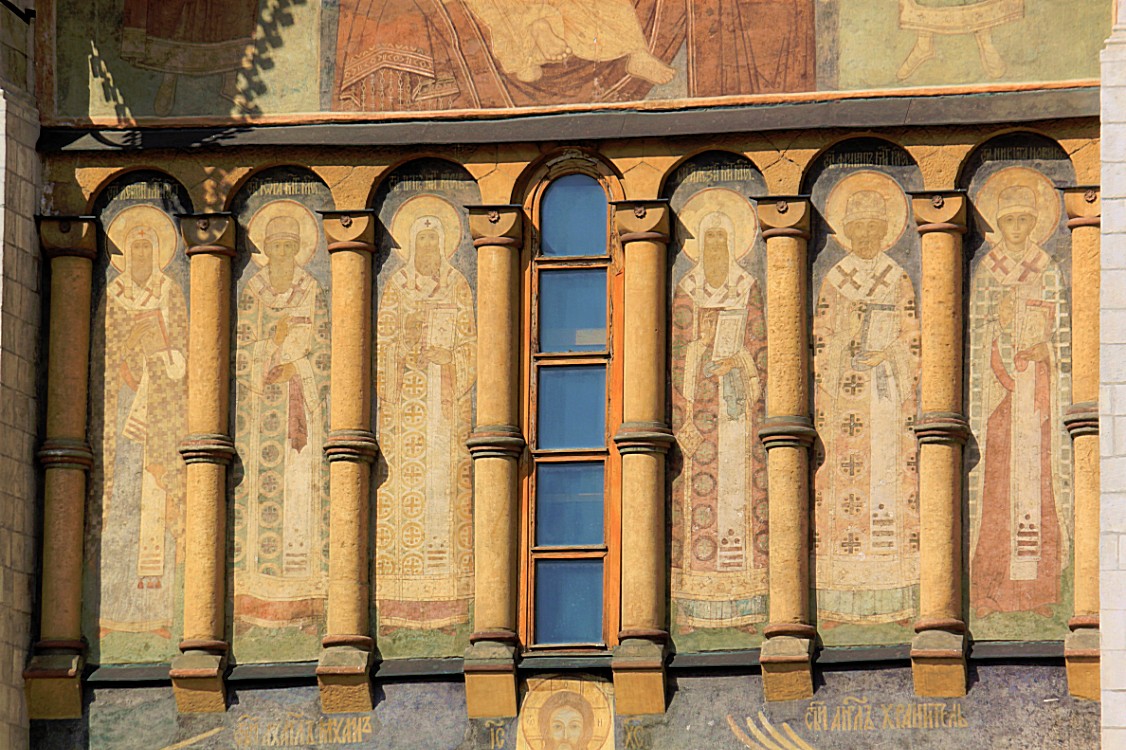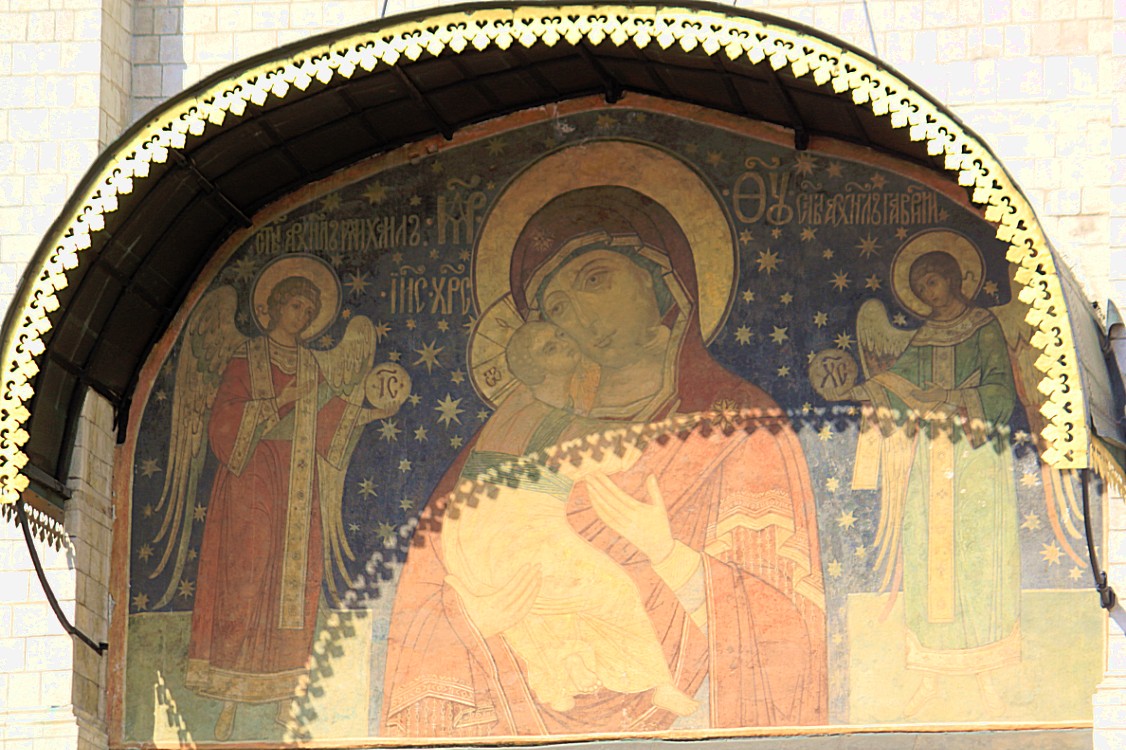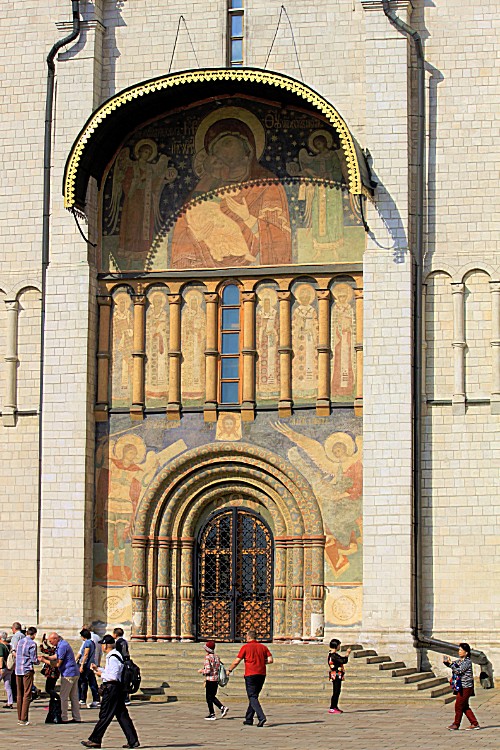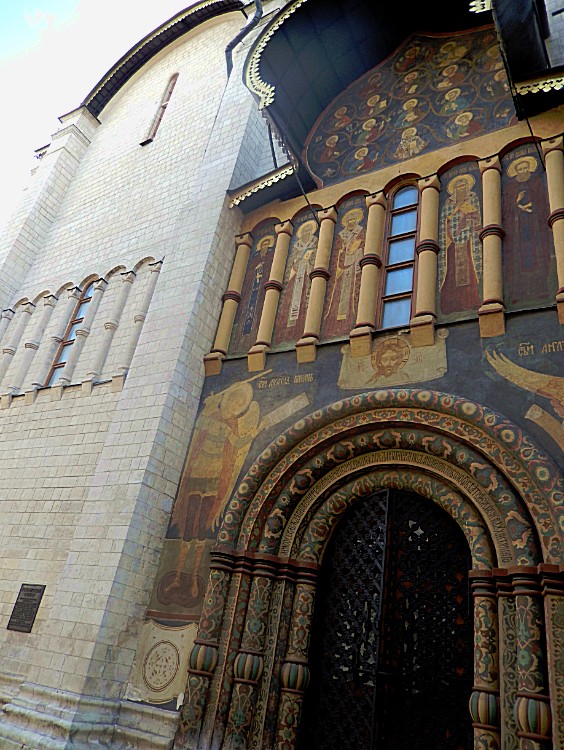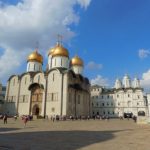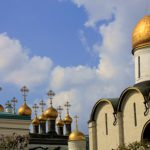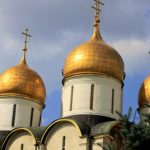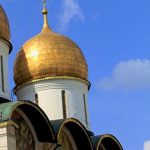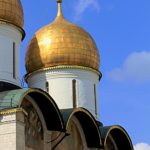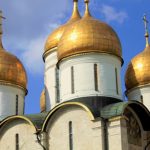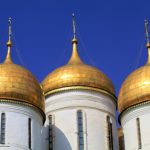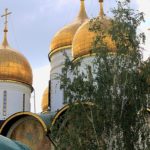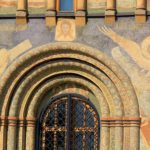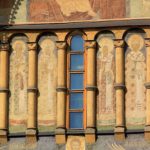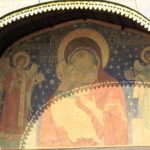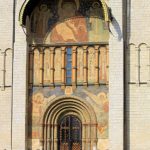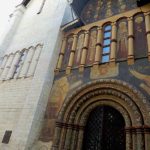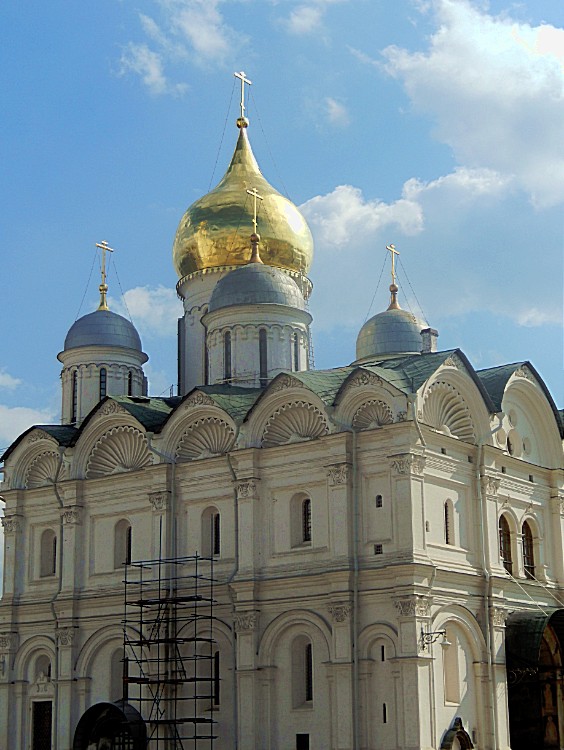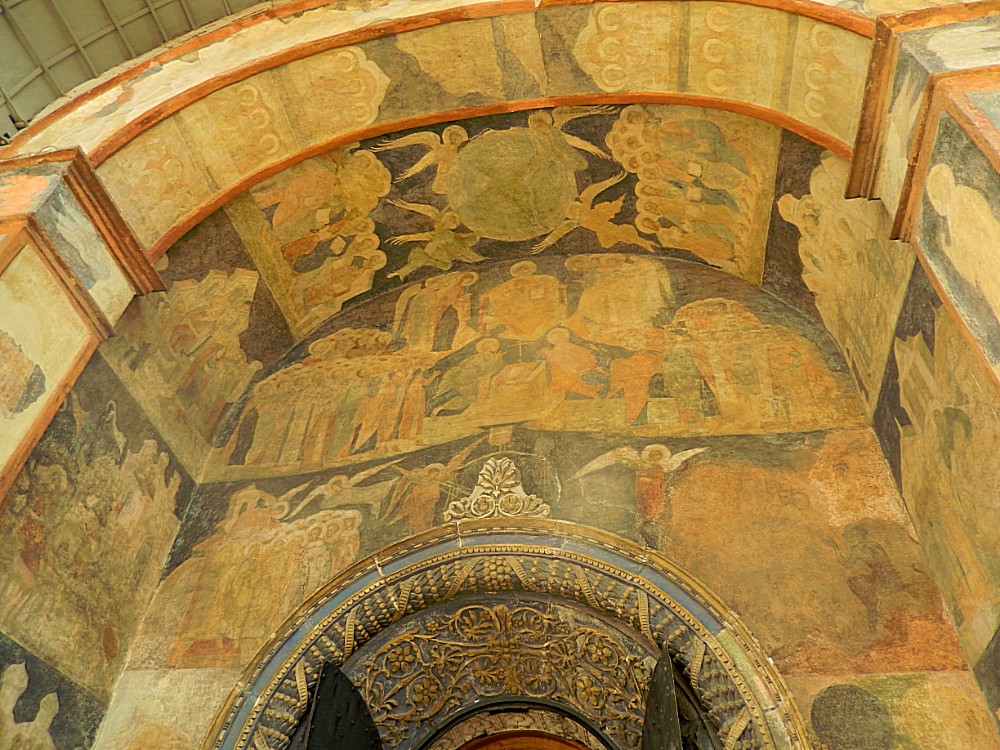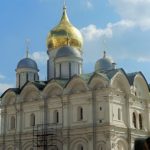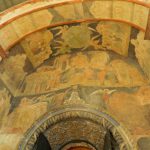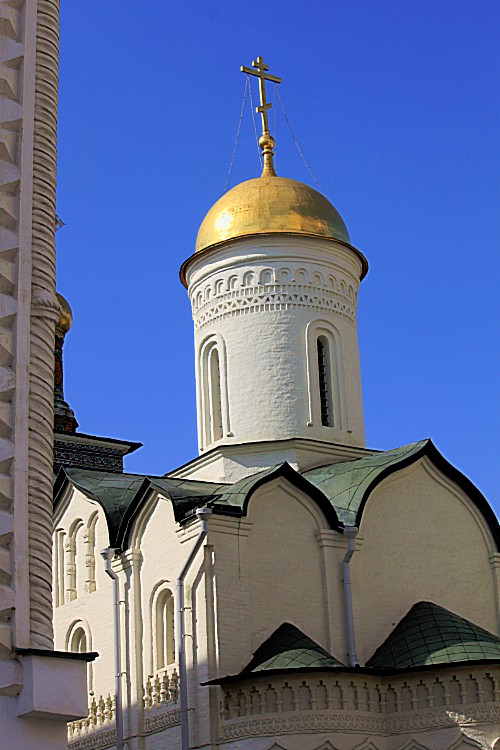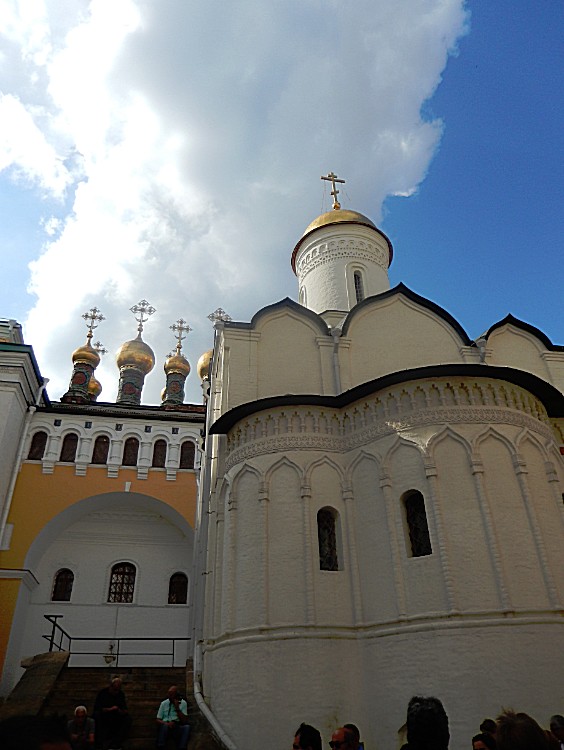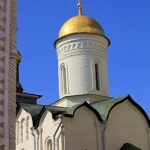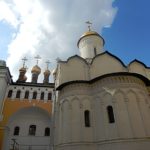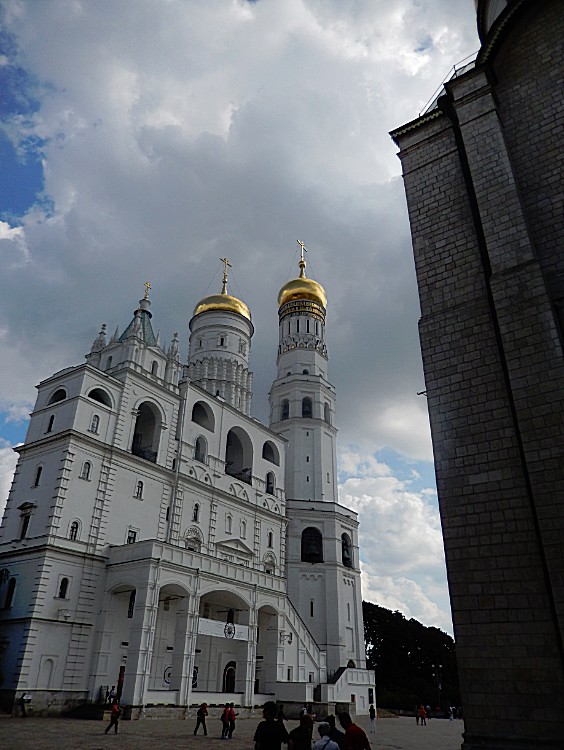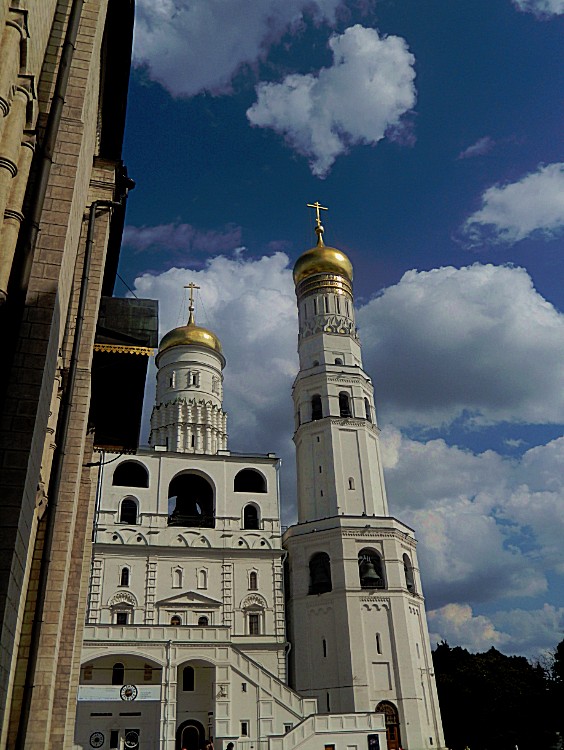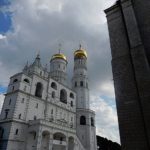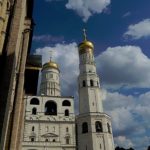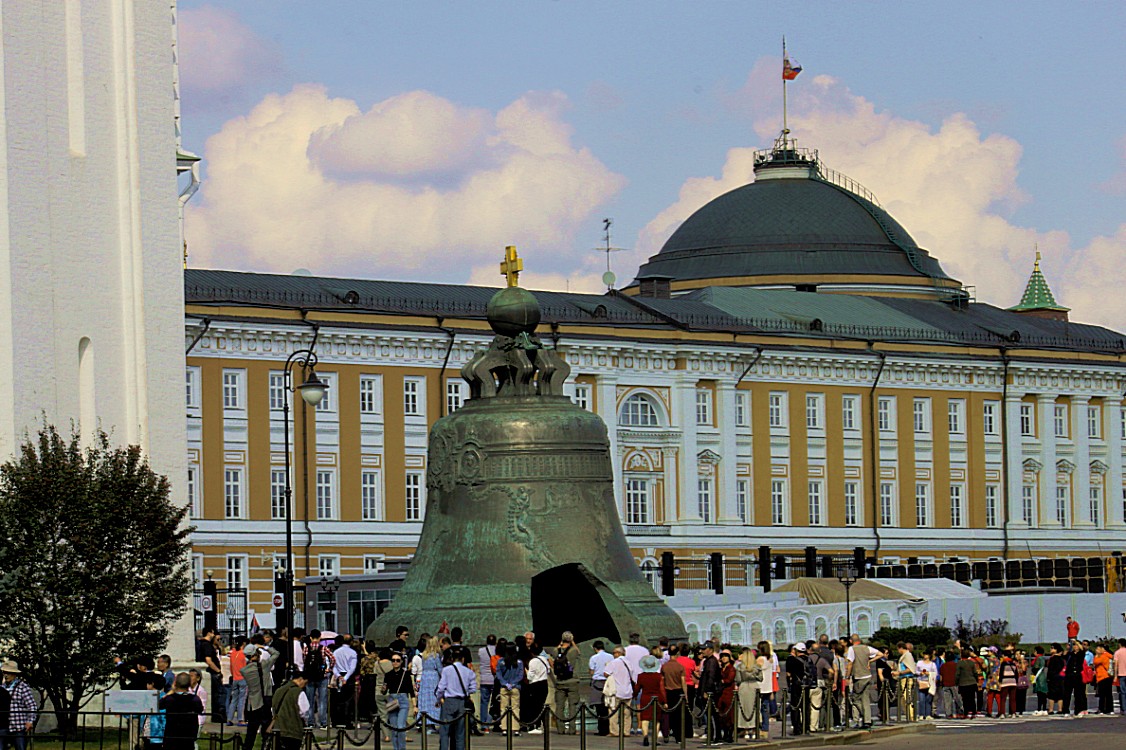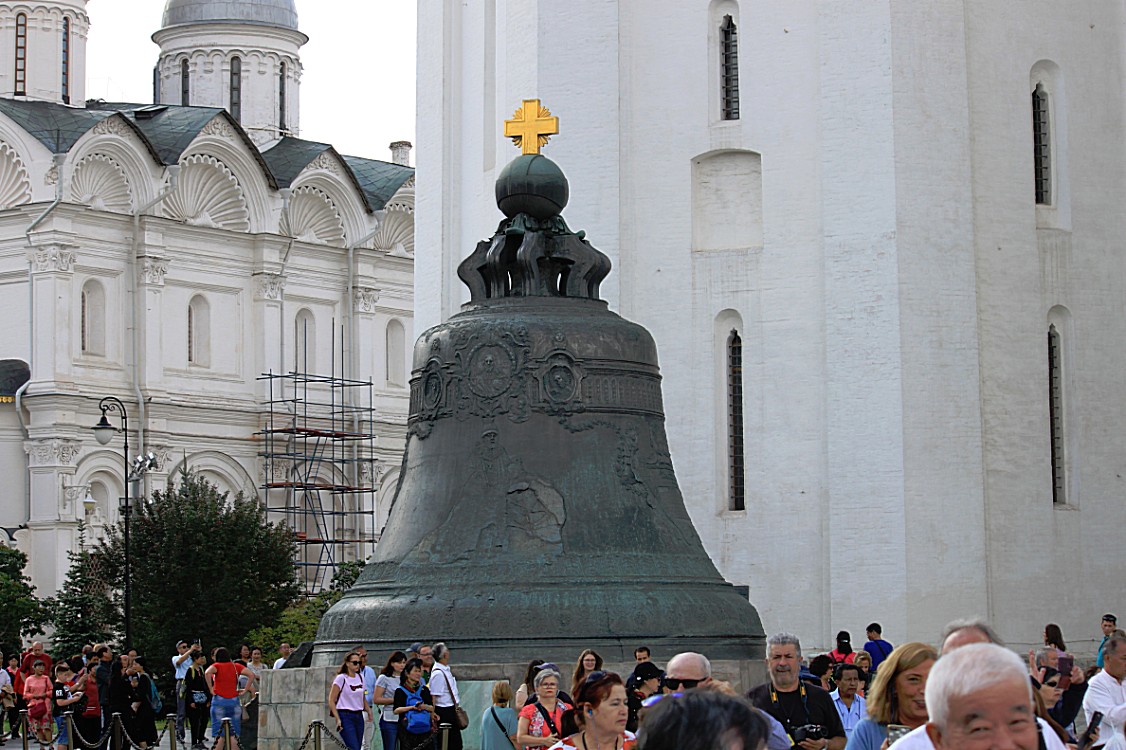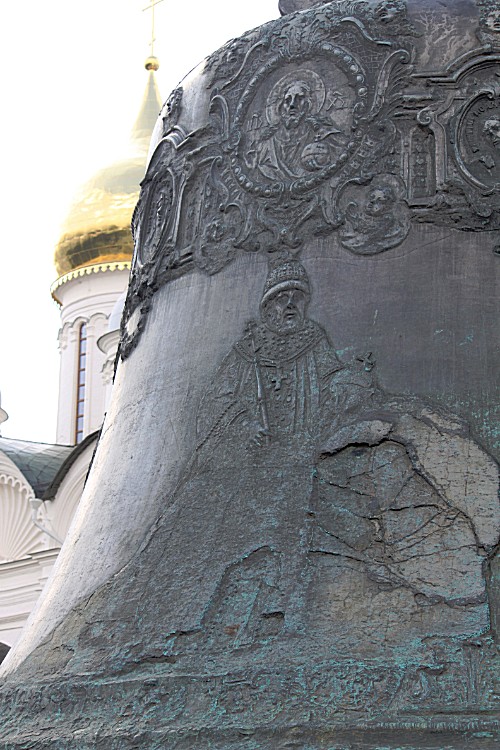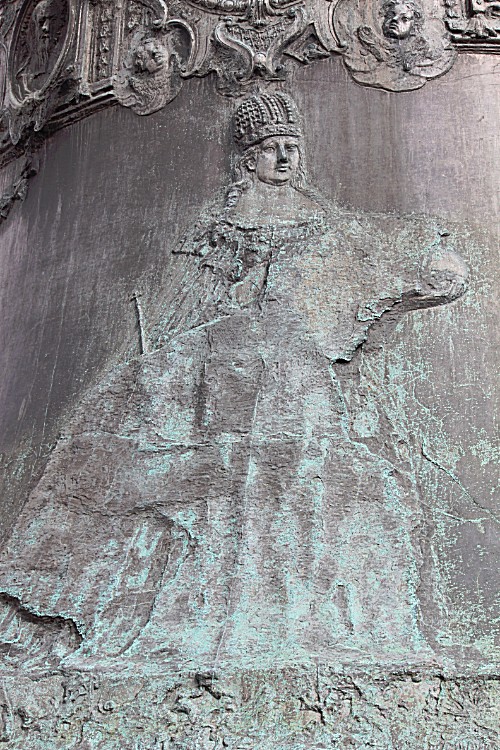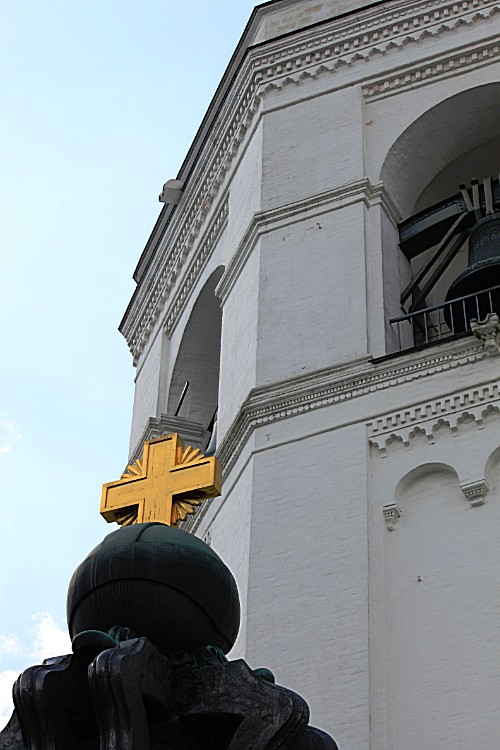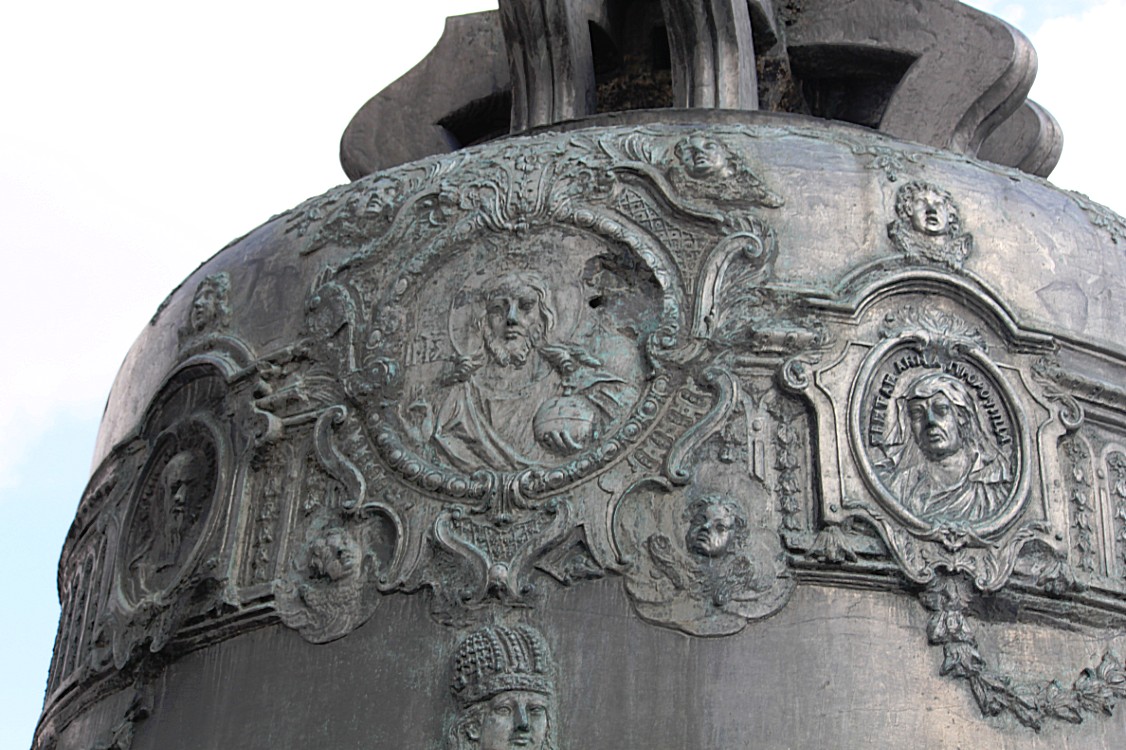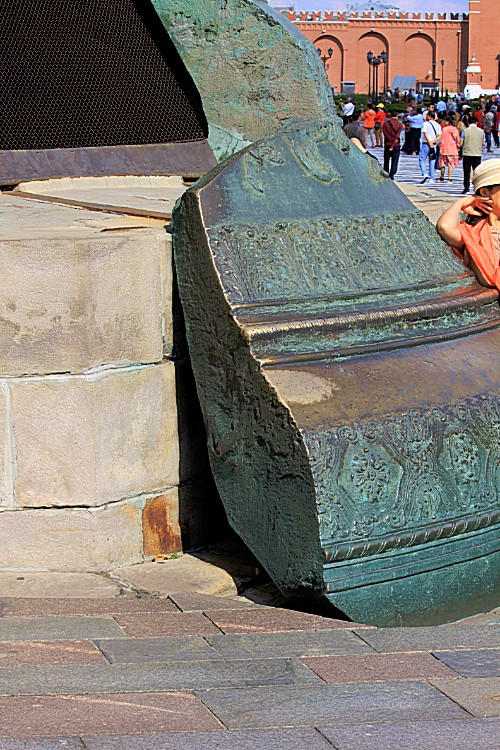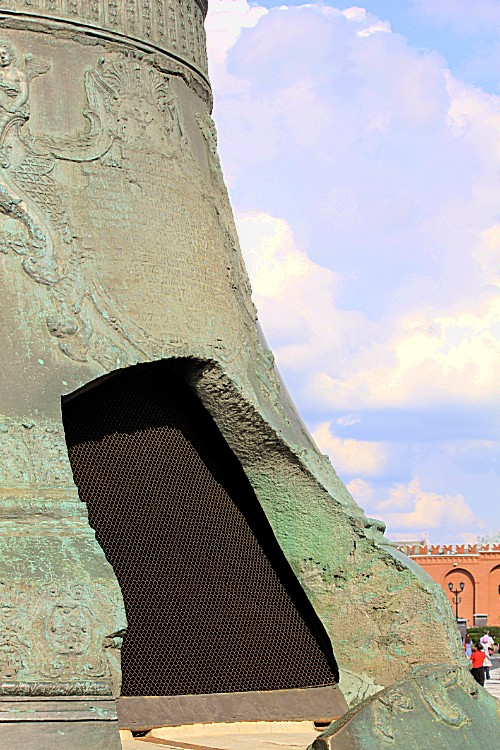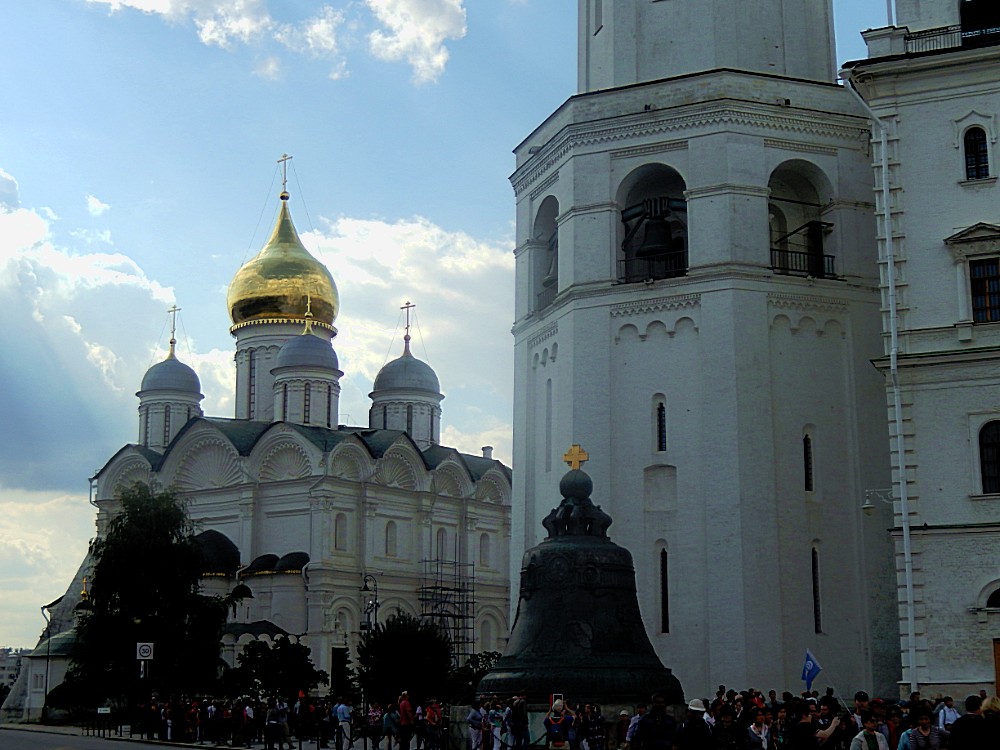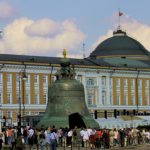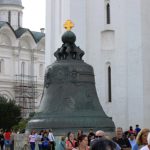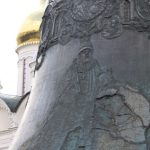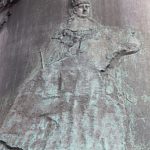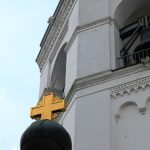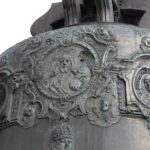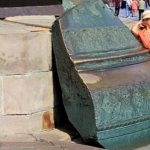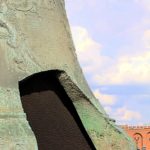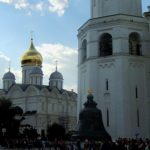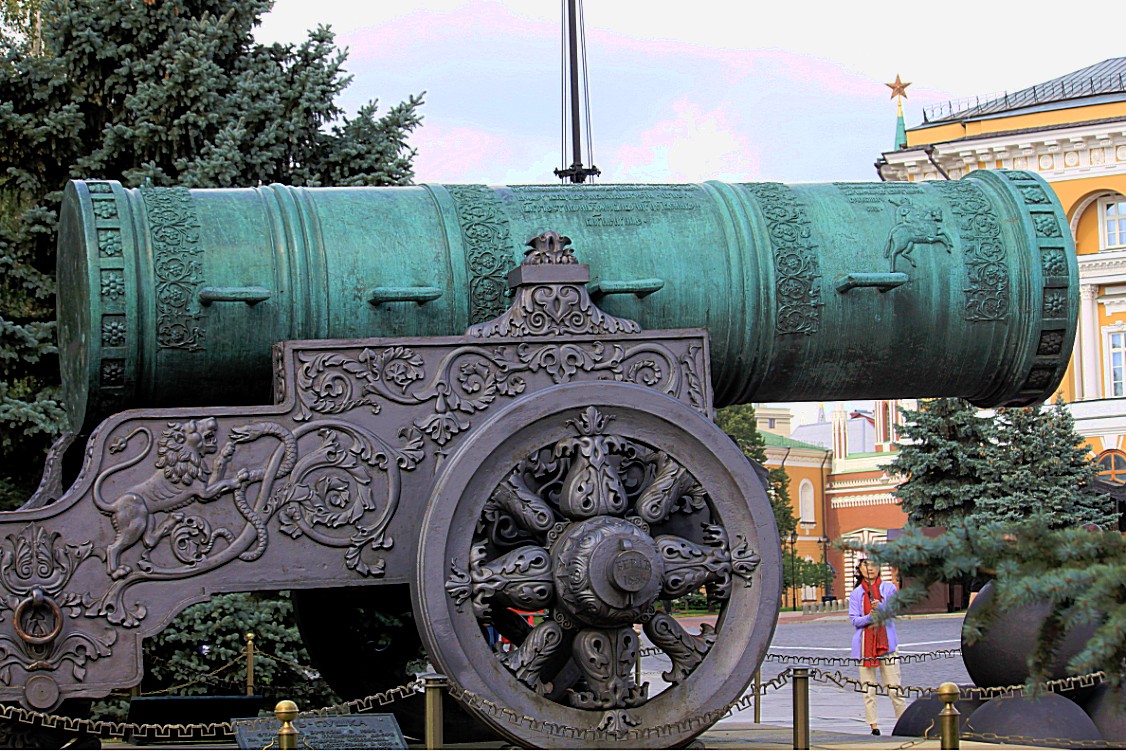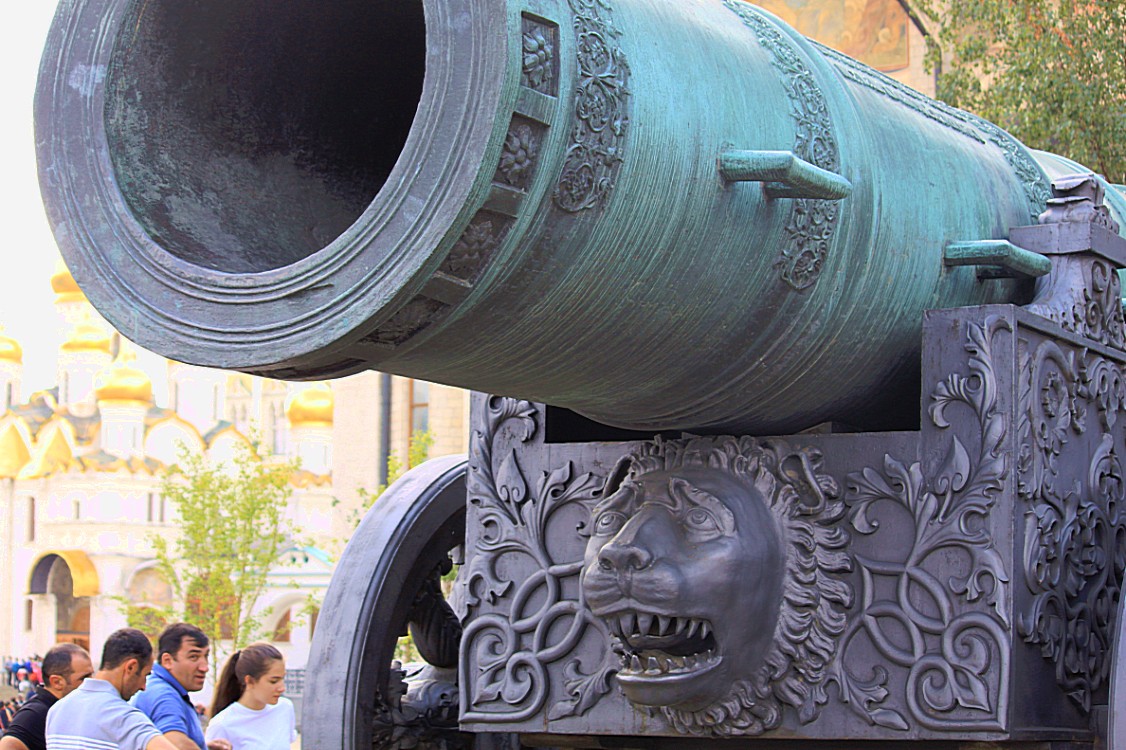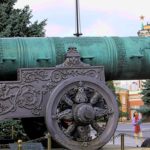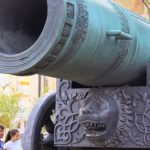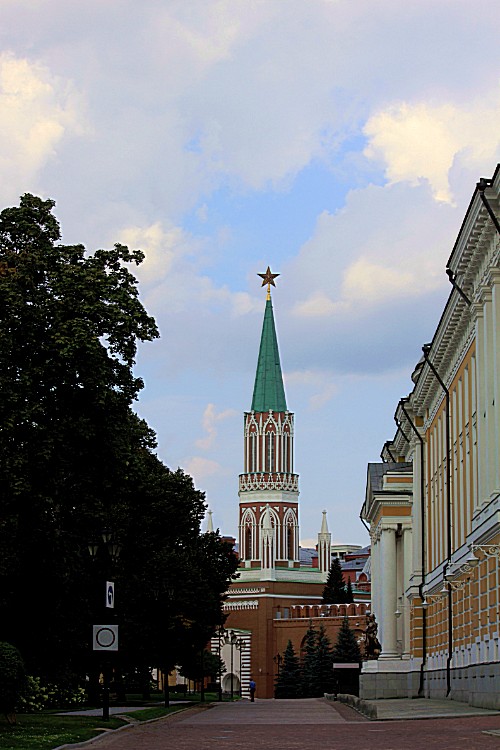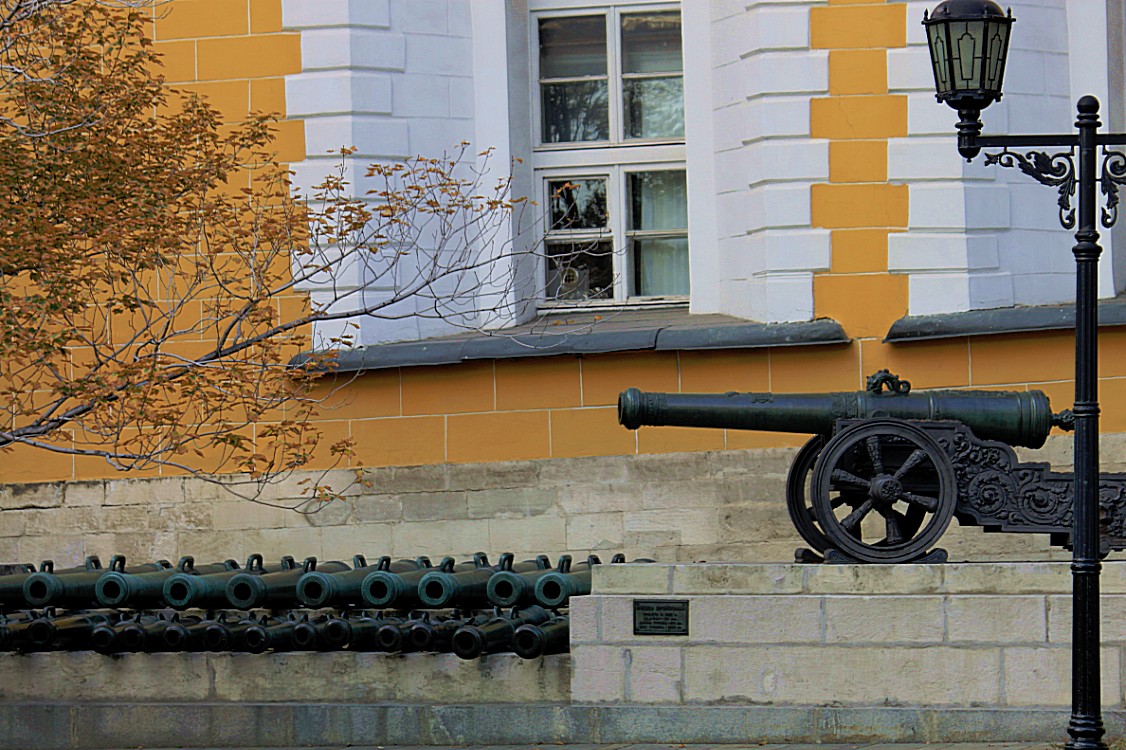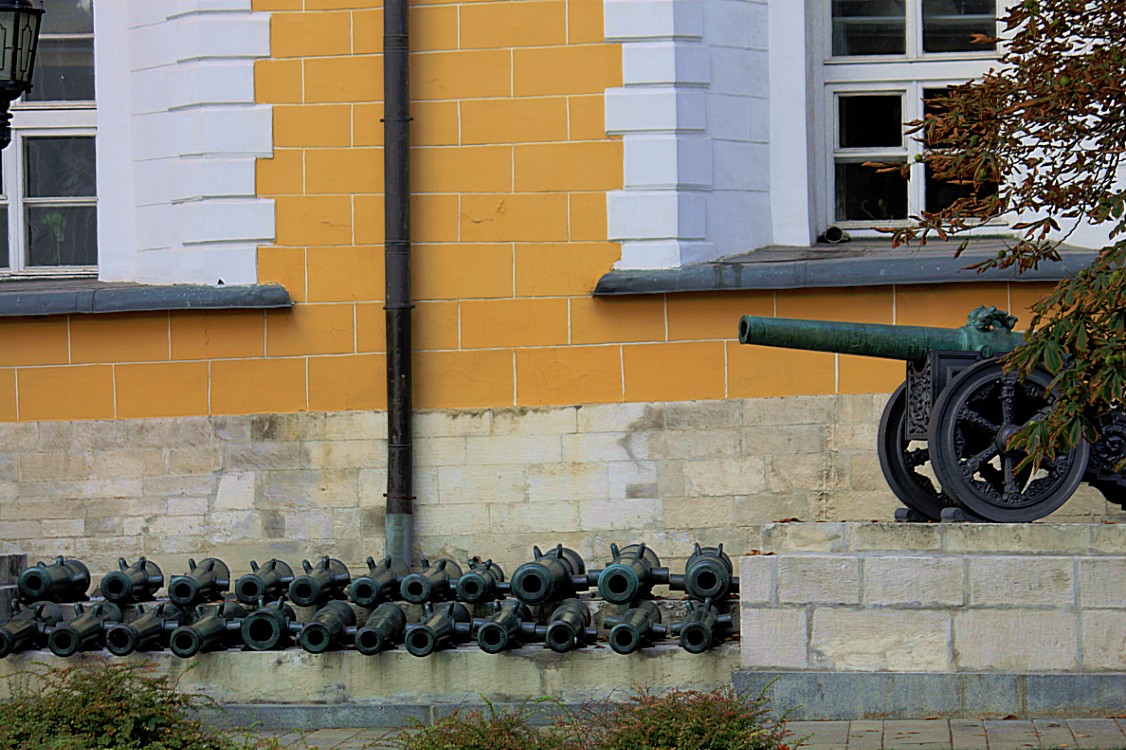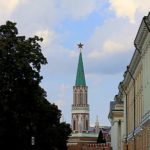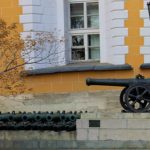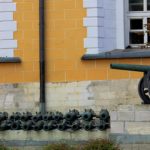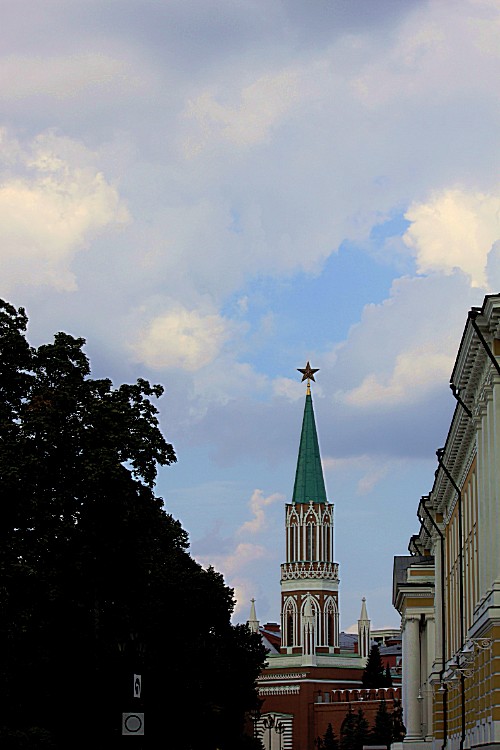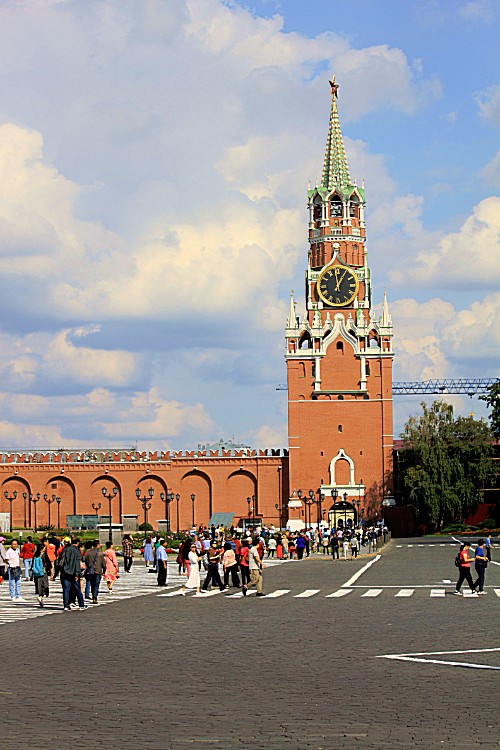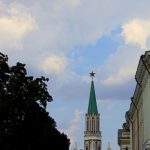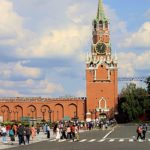The Kremlin – from fortress to government seat
Today after a quick morning shower and a decent breakfast, The Wandelgek joined a guided tour through the Kremlin, starting at its most valued musuem, the Armoury. TIP: To visit the armoury, a separate entry ticket is needed (sold at the ticket office of Troiskaya tower) and the entrance gate when visiting the Armoury is the less crowded gate at the Borovitskaya tower. (When not visiting the armoury, the entry gate and ticket offices are both at the Troiskaya tower). The Wandelgek entered the Kremlin. But 1st…
What is a Kremlin?
A kremlin (Russian: кремль, “castle”, or “citadel”) is a major fortified central complex found in historic Russian cities. This word is often used to refer to the most famous, the Moscow Kremlin, or metonymically to the government that is based there. The word is of Russian and Slavic origin. The word may share the same root as kremen (кремень [krʲɪˈmʲenʲ], “flint”). Some kremlins in Russia are called detinets, as for example the Novgorod Detinets.
Selected Russian cities with kremlins
World Heritage Sites
- Moscow Kremlin
- Novgorod Kremlin
- Solovetsky Monastery
- Suzdal Kremlin
- Kazan Kremlin
Intact
- Astrakhan Kremlin
- Kolomna Kremlin
- Nizhny Novgorod Kremlin
The Moscow Kremlin
The Moscow Kremlin, or simply the Kremlin, is a fortified complex in the center of Moscow, overlooking the Moskva River to the south, Saint Basil’s Cathedral and Red Square to the east, and the Alexander Garden to the west. It is the best known of the kremlins (Russian citadels) and includes five palaces, four cathedrals, and the enclosing Kremlin Wall with Kremlin towers. In addition, within this complex is the Grand Kremlin Palace that was formerly the Tsar’s Moscow residence. The complex now serves as the official residence of the President of the Russian Federation and as a museum with 2,746,405 visitors in 2017.
Map

Moscow Kremlin Museums
Moscow Kremlin Museums (Russian Музеи Московского Кремля, MMK or Государственный историко-культурный музей-заповедник «Московский Кремль») is a major state-run museum in Moscow Kremlin. Its roots lie in the Kremlin Armoury museum founded in 1806, the current form of the museum started in 1991. The Head of the museum (since 2001) is Yelena Gagarina, daughter of cosmonaut Yuri Gagarin. There were 2,746,405 visitors in the Kremlin Museums in 2017.
Moscow Kremlin Museums have the following parts:
- Kremlin Armoury (Оружейная палата)
- Diamond Fund (Алмазный фонд)
- Dormition Cathedral (Успенский Собор)
- Cathedral of the Archangel (Архангельский собор)
- Cathedral of the Annunciation (Благовещенский собор)
- Residence of Patriarchs and Church of the Twelve Apostles (Патриарший дворец и церковь Двенадцати апостолов)
- Church of the Deposition of the Robe (Церковь Ризоположения)
- Ivan the Great Bell Tower (Колокольня Ивана Великого)
Kremlin Armoury
The Kremlin Armoury, is one of the oldest museums of Moscow, located in the Moscow Kremlin, now a part of Moscow Kremlin Museums.
The Kremlin Armoury originated as the royal arsenal in 1508. Until the transfer of the court to St Petersburg, the Armoury was in charge of producing, purchasing and storing weapons, jewelry and various household articles of the tsars. The finest Muscovite gunsmiths (the Vyatkin brothers), jewelers (Gavrila Ovdokimov), and painters (Simon Ushakov) used to work there. In 1640 and 1683, they opened the iconography and pictorial studios, where the lessons on painting and handicrafts could be given. In 1700, the Armoury was enriched with the treasures of the Golden and Silver chambers of the Russian tsars.
In 1711, Peter the Great had the majority of masters transferred to his new capital, St Petersburg. 15 years later, the Armoury was merged with the Fiscal Yard (the oldest depository of the royal treasures), Stables Treasury (in charge of storing harnesses and carriages) and the Master Chamber (in charge of sewing clothes and bedclothes for the tsars). After that, the Armoury was renamed into the Arms and Master Chamber. Alexander I of Russia nominated the Armoury as the first public museum in Moscow in 1806, but the collections were not opened to the public until seven years later. The current Armoury building was erected in 1844–1851 by the imperial architect Konstantin Ton. The director of the museum from 1852 to 1870 was the writer Alexander Veltman.
After the Bolshevik Revolution, the Armoury collection was enriched with treasures looted from the Patriarch sacristy, Kremlin cathedrals, monasteries and private collections. Some of these were sold abroad on behest of Joseph Stalin in the 1930s. In 1960, the Armoury became the official museum of the Kremlin. Two years later, the Patriarch chambers and the Cathedral of the Twelve Apostles were assigned to the Armoury in order to house the Applied Arts Museum.
The Kremlin Armoury is currently home to the Russian Diamond Fund. It holds unique collections of the Russian, Western European and Eastern applied arts spanning the period from the 5th to the 20th centuries. Some of the highlights include the Imperial Crown of Russia by jeweller Jérémie Pauzié, Monomakh’s Cap, the ivory throne of Ivan the Terrible, and other regal thrones and regalia; the Orlov Diamond; the helmet of Yaroslav II; the sabres of Kuzma Minin and Dmitri Pozharski; the 12th-century necklaces from Ryazan; golden and silver tableware; articles, decorated with enamel, niello and engravings; embroidery with gold and pearls; imperial carriages, weapons, armour, and the Memory of Azov, Bouquet of Lilies Clock, Trans-Siberian Railway, Clover Leaf, Moscow Kremlin, Alexander Palace, Standart Yacht, Alexander III Equestrian, Romanov Tercentenary, Steel Military Fabergé eggs. The ten Fabergé eggs in the Armoury collection (all Imperial eggs) are the most Imperial eggs, and the second-most overall Fabergé eggs, owned by a single owner.
Cathedral Square
Cathedral Square or Sobornaya Square is the central square of the Moscow Kremlin where all of its streets used to converge in the 15th century.
The square owes its name to the three cathedrals facing it – Cathedral of the Dormition, Cathedral of the Archangel, and Cathedral of the Annunciation. Apart from these, the Palace of Facets, the Church of the Deposition of the Robe and the Church of the Twelve Apostles are placed there. The tallest structure on the square (and formerly in all of Russia) is Ivan the Great Bell Tower, which also separates Sobornaya Square from Ivanovskaya Square.
Cathedral Square is famous as the site of solemn coronation and funeral processions of all the Russian tsars, patriarchs, and Grand Dukes of Moscow. Even today, the square is used in the inauguration ceremony of the President of Russia.
The square is also the scene of the daily changing of the Horse Guards (a spectacular imperial tradition restored in the 21st century).
Cathedral of the Dormition
The Cathedral of the Dormition, also known as the Assumption Cathedral or Cathedral of the Assumption is a Russian Orthodox church dedicated to the Dormition of the Theotokos. It is located on the north side of Cathedral Square of the Moscow Kremlin in Russia, where a narrow alley separates the north from the Patriarch’s Palace with the Twelve Apostles Church. Separately in the southwest, also separated by a narrow passage from the church, is the Palace of Facets. The Cathedral is regarded as the mother church of Muscovite Russia. In its present form it was constructed between 1475–79 at the behest of the Moscow Grand Duke Ivan III by the Italian architect Aristotele Fioravanti. From 1547 to 1896 it was where the Coronation of the Russian monarch was held. In addition, it is the burial place for most of the Moscow Metropolitans and Patriarchs of the Russian Orthodox Church and it also serves as a part of Moscow Kremlin Museums.
Cathedral of the Archangel
The Cathedral of the Annunciation
The Church of the Deposition of the Robe
The Church of the Deposition of the Robe is a church which stands on Cathedral Square in the Moscow Kremlin. It was begun in 1484 by masters from Pskov, most likely by the same group of architects who built the adjacent Cathedral of the Annunciation. It serves as a part of Moscow Kremlin Museums.
The church was built on the site of a previous church, built by Jonah Metropolitan of Moscow in 1451. The name of the church, variously translated as the Church of the Virgin’s Robe, The Church of Laying Our Lady’s Holy Robe, The Church of the Veil or simply Church of the Deposition, is said to refer to a festival dating from the 5th century AD, celebrating when the robe of the Virgin Mary was taken from Palestine to Constantinople, where it protected the city from being conquered. For example, tradition says that during the Rus’-Byzantine War of 860 the patriarch placed the Virgin’s Robe into the sea, causing a storm that destroyed the invading Rus’ ships.
A four-level iconostasis, created by Nazary Istomin Savin in 1627, has been preserved in the church, and has frescoes painted by Ivan Borisov, Sidor Pospeev and Semyon Abramov in 1644. The church itself was built in the traditional Early Russian style, characterized by “a noticeable tendency towards more elevated proportions, the overall structure being extended by being placed on raised foundations, and the drum supporting the single dome also being raised.” As with the Cathedral of the Annunciation, the intricate interior detail and ornamentation were characteristic of the Russian architecture of this period.
Originally, the church served as the private chapel of the Patriarch of Moscow, but during the mid-17th century it was taken over by the Russian royal family. The church was badly damaged in a fire in 1737 (the same fire that cracked the Tsar Bell).
Today, the church also houses a display of wood sculpture from the 14th to 19th century.
Church of the twelve apostles
The Patriarchal Chambers and the Church of the Twelve Apostles is a minor cathedral of the Moscow Kremlin, commissioned by Patriarch Nikon as part of his stately residence in 1653 and dedicated to Philip the Apostle three years later. It also serves as a part of Moscow Kremlin Museums.
Although premises for the Muscovite metropolitan had existed in the Kremlin ever since the 14th century, Patriarch Nikon, who aspired to rival the tsar in authority and magnificence, had them replaced with a much more ambitious residence, centered on a spacious chamber in the form of the cross, once used as a banqueting hall but now serving as a museum of applied arts. To this structure adjoins from the south a domestic church of the patriarchs, originally consecrated to Philip the Apostle until the dedication was altered to the present one in 1682. The church is almost as prominent as neighbouring grand cathedrals of the 15th century, due to its placement upon a high podium, pierced by two large arches allowing passage from the Cathedral Square to the patriarch’s courtyard. The exterior walls are decorated with two belts of columned arches which reference both the neighbouring cathedrals of the Cathedral Square and the great churches of the 12th-century Vladimir-Suzdal school which had been their inspiration. The rigorous outline of five helmeted domes, in keeping with Nikon’s conservative architectural tastes, serves to accentuate the church’s Byzantine pedigree.
The patriarchal residence was seriously damaged when the Bolsheviks shelled the Kremlin in October 1917. Subsequently, the church was restored in order to accommodate the applied arts museum. Very little subsists of its original murals, yet there is a delightful 17th-century iconostasis, salvaged from the Ascension Convent cathedral upon its demolition by the Bolsheviks and displaying many fine old icons, notably those by Fyodor Zubov and Simon Ushakov.
The Ivan the Great Bell Tower
The Ivan the Great Bell Tower is a church tower inside the Moscow Kremlin complex. With a total height of 81 metres (266 ft), it is the tallest tower and structure of Kremlin. It was built in 1508 on Cathedral Square for the three Russian Orthodox cathedrals, namely the Assumption (closest to the tower), the Archangel and the Annunciation, which do not have their own belfries. It serves as a part of Moscow Kremlin Museums.
The Tsar Bell
The Tsar Bell, also known as the Tsarsky Kolokol, Tsar Kolokol III, or Royal Bell, is a 6.14-metre (20.1 ft) tall, 6.6-metre (22 ft) diameter bell on display on the grounds of the Moscow Kremlin. The bell was commissioned by Empress Anna Ivanovna, niece of Peter the Great.
It has never been in working order, suspended, or rung.
The present bell is sometimes referred to as Kolokol III (Bell III), because it is the third generation
General description
The Tsar Bell is located between the Ivan the Great Bell Tower and the Kremlin Wall. Made of bronze, the bell cracked during a fire after being completed and has never been rung. The bell is the largest bell in the world, weighing 201,924 kilograms (445,166 lb), with a height of 6.14 metres (20.1 ft) and diameter of 6.6 metres (22 ft), and thickness of up to 61 centimetres (24 in). The broken piece weighs 11,500 kilograms (25,400 lb).
The bell is decorated with relief images of baroque angels, plants, oval medallions with saints, and nearly life-size images of Empress Anna and Tsar Alexey, who was reigning at the time the previous Tsar Bell was cast.
The Tsar Canon
The Tsar Cannon is a large early modern period artillery piece (known as a bombarda in Russian) on display on the grounds of the Moscow Kremlin. It is a monument of Russian artillery casting art, cast in bronze in 1586 in Moscow, by the Russian master bronze caster Andrey Chokhov. Mostly of symbolic impact, it was never used in a war. However, the cannon bears traces of at least one firing. Per the Guinness Book of Records it is the largest bombard by caliber in the world, and it is a major tourist attraction in the ensemble of the Moscow Kremlin.
Description
The Tsar Cannon is located just past the Kremlin Armory, facing towards the Kremlin Senate. The very low ratio of the length of its barrel to its caliber makes it technically not a cannon, but a stylized mortar. The Tsar Cannon is made of bronze; it weighs 39.312 tonnes and has a length of 5.34 m (17.5 ft). Its bronze-cast barrel has an internal diameter of 890 mm (35.0 in), and an external diameter of 1,200 mm (47.2 in). The barrel has eight cast rectangular brackets for use in transporting the gun, which is mounted on a stylized cast iron gun carriage with three wheels. The barrel is decorated with relief images, including an equestrian image of Tsar Fyodor Ivanovich, with a crown and a scepter in his hand on horseback. Above the front right bracket the message “The grace of God, Tsar and Great Duke Fyodor Ivanovich, Autocrat of all All Russia” was cast. There were two more labels cast at the top of the barrel, to the right is “The decree of the faithful and Christ-king and the Grand Duke Fyodor Ivanovich, Sovereign Autocrat of all Great Russia with his pious and god-blessed queen, Grand Princess Irina”; While to the one to the left is “Cast in the city of Moscow in the summer of year 7904(c. 1585 in Gregorian calendar), in his third summer state, by Andrey Chokov.” The cannon-style gun carriage, added in 1835, is purely decorative. This weapon was never intended to be transported on or fired from this gun carriage.
According to one version, the name of this cannon, “Tsar”, is associated with the image of Tsar Fyodor Ivanovich. However, it is more likely that this name owes to the massive size of this cannon. In old times the cannon is also sometimes called the “Russian Shotgun”(Дробовик Российский, Drobovik Rossiyskiy, lit. Shotgun Russian), because the gun was meant to shoot 800 kg stone grapeshot rather than true, solid cannonballs.
The cannon ought to be classified as only a mortar by its barrel length in modern classification, with the barrel length at only 6 calibers. However, in the 17th to the 18th century, it was rather called a “Bombard cannon”, since mortars at that time had barrel lengths of no more than 2.5 calibers, or 3.5 calibers at maximum for long-range mortars.
The spherical cast-iron projectiles located in front of the Tsar Cannon—each of which weighs approximately one ton—were produced in 1834 as a decoration, and are too large to have been used in the cannon. According to legend, the cannonballs were manufactured in St. Petersburg, and were intended to be a humorous addition and a symbol of the friendly rivalry between Moscow and St. Petersburg.
The Arsenal
The Kremlin Arsenal is a former armory built within the grounds of the Moscow Kremlin in Russia. Initially constructed in 1736, it has been rebuilt several times. It remains in military use to date, unlike the Kremlin Armoury, another arsenal within the walls of the Moscow Kremlin, which is now a museum. The building is off-limits to tourists, who can view a portion of its short southern façade upon entering the precincts of the Moscow Kremlin.
The Kremlin Arsenal is currently home to the Kremlin Regiment, which forms the main security service for the Russian President, and the longer eastern façade is a high secured and restricted area closed to the public.
Building
The Kremlin Arsenal is a large elongated trapezoid two-storey building with a large courtyard. It occupies most of the northern corner of the Moscow Kremlin, with its north-west and north-eastern sides directly adjacent to the Kremlin Wall parallel to Red Square, from Trinity Tower to St Nicholas Tower.
The building is 24 metres (79 ft) high and 300 metres (980 ft) long on its longest side. Its brick walls are painted yellow, as are most other official buildings within the Kremlin. Of note are its two rows of spaced, paired, arched windows with deep, white limestone frames. Two entrances to the patio on the south and east facades have arched porticos with baroque ornaments.
Senate
The Kremlin Senate is a building within the grounds of the Moscow Kremlin in Russia. Initially constructed from 1776 to 1787, it originally housed the Moscow branch of the Governing Senate, the highest judiciary and legislative office of Imperial Russia. Currently, it houses the Russian presidential administration and is a highly secured and restricted area closed to the public. At present, only the southern corner façade, opposite the Tsar Cannon can be viewed.
Kremlin walls and towers
The Moscow Kremlin Wall is a defensive wall that surrounds the Moscow Kremlin, recognisable by the characteristic notches and its Kremlin towers. The original walls were likely a simple wooden fence with guard towers built in 1156. Kremlin walls, like many cathedrals in Kremlin were built by Italian architects. There are multiple walls with design of “swallow tail” in Verona.
History
One of the most symbolic constructions in Russia’s history, the Moscow Kremlin Wall can be traced back to the 12th century when Moscow was founded in 1147. The original outpost was surrounded by the first walls in 1156, built by Yuri Dolgoruki, prince of Suzdal, which were most likely a simple wooden fence with guard towers. Destroyed in 1238 by the Mongol-Tartar invasion, the Moscow Kremlin was rebuilt by the Russian Knyaz Ivan Kalita. In 1339-1340 he erected a bigger fortress on the site of the original outpost which was defended by massive oak walls. Thought to be an impenetrable defence from raids, it was proven to be useless against raids which burned Moscow in 1365.
Nevertheless, the young knyaz Dmitry Donskoy in 1367 began a rebuilding of the fortress. All winter long from the Mukachyovo village 30 virsts (country miles) from Moscow, limestone was hauled back on sledges, allowing the construction of the first stone walls to begin the following spring. The walls successfully withstood two sieges during the Lithuanian–Muscovite War (1368–72). Within a few years the city was adorned with beautiful white-stone walls. Whilst it was successfully invaded by the Tatars again in 1382, the massive fortification suffered no damage.
Dmitry Donskoy’s walls stood for over a century, and it was during this period that Muscovy rose as the dominant power in Northeastern Rus.
It was probably this story about the strength of the Moscovian kremlin walls that inspired the brewers of the Davo brewery in my hometown of Deventer to name their Imperial Stout style beer: The DON, after Saint Dmitri Ivanovitsj Donskoy. Stout literally meaning strong and brave (stout hearted). More info at: https://www.davobieren.nl/bieren/the-don/
By the end of the 15th century, however, it was clear that the old constructions had long passed their time and Czar Ivan the Great’s visions. Between 1485 and 1495 a whole brigade of Italian architects took part in the erection of a new defence perimeter including Antonio Fryazin (Antonio Gilardi), Marko Fryazin (Marco Ruffo), Pyotr Fryazin (Pietro Antonio Solari) and Alexei Fryazin the Old (Aloisio da Milano). (The term Fryazin was used to refer to all people of Italian origin at this time). The new walls were erected by building on top of the older walls (some white stone can still be seen at the base in some places). The thickness and height was dramatically increased requiring many wooden houses which surrounded the Kremlin to be torn down.
In the following centuries Moscow expanded rapidly outside the Kremlin walls and as Russia’s borders became more and more secure their defensive duty has all but passed. The cannons which were installed in the walls were removed after the turn of the 17th century, as was the second, smaller wall which repeated the perimeter on the outside. During the reign of Czar Alexei Romanov, the towers were built up with decorative spires and the walls were restored. However their historical mightiness was dampened as the material became brick not stone. Successive restorations of varying scale took place during the reigns of Empress Elizabeth and Alexander the First as well as the later Soviet and Russian times, preserving their original character and style.
The Wandelgek left the Kremlin through its main entrance.

